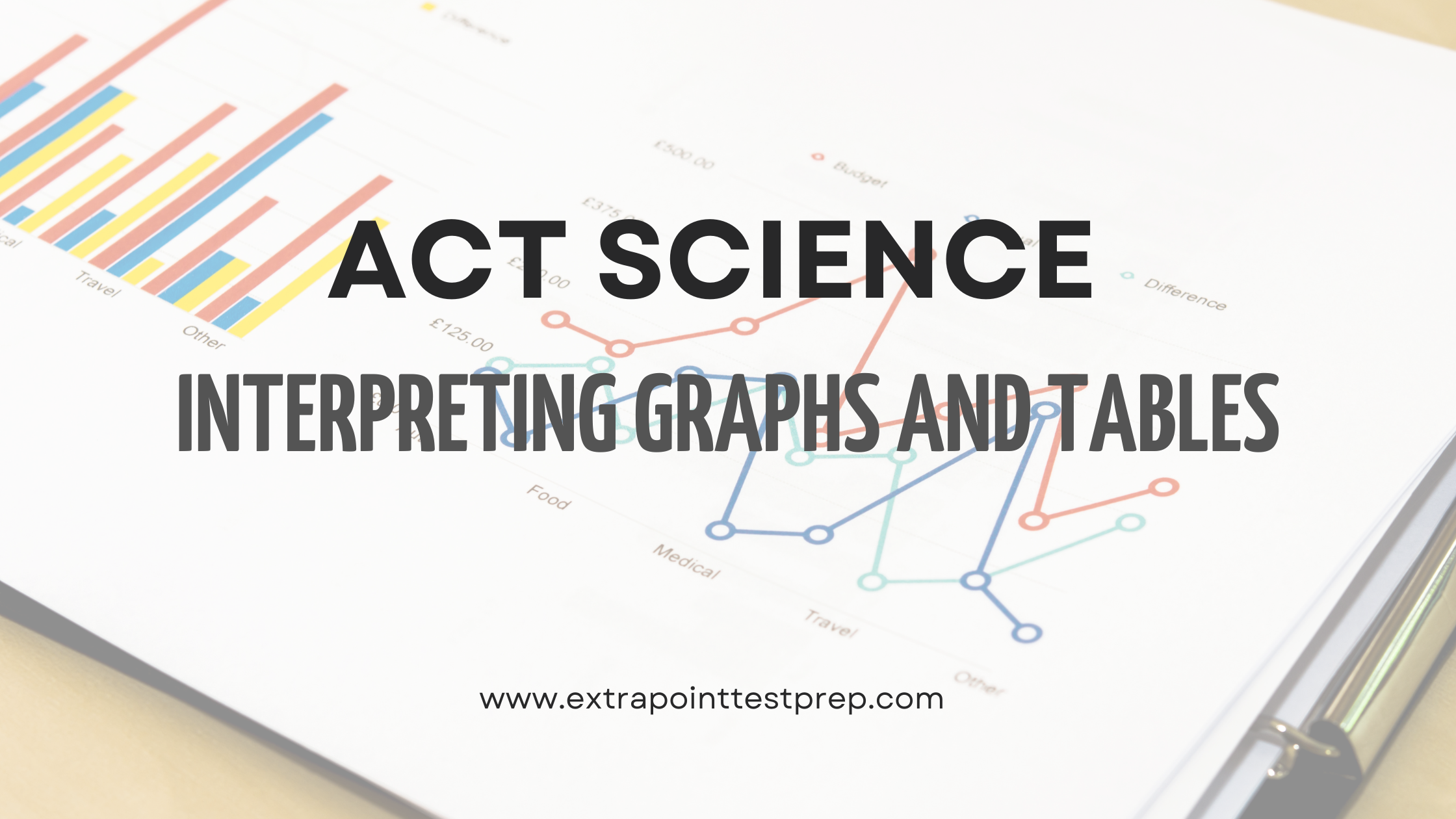The ACT Science section often features graphs and tables that present data and information critical for answering the questions accurately. Mastering the art of interpreting these visual data presentations can significantly enhance your performance on the ACT. Here are some effective tips and strategies to help you navigate and understand graphs and tables in the ACT Science section.
1. Understand the Basics of Graphs and Tables
Why It Matters: Graphs and tables are commonly used to illustrate relationships between variables and summarize data. A clear understanding of their basic components helps you quickly identify relevant information.
Key Points:
- Axes and Labels: In graphs, the x-axis typically represents the independent variable, while the y-axis represents the dependent variable. Always check the labels and units of measurement.
- Legend and Key: For graphs and tables with multiple data sets, refer to the legend or key to differentiate between them.
- Headings and Titles: The title of the graph or table provides context, and headings clarify what the data represent.
2. Analyze the Data Trends
Why It Matters: Recognizing trends and patterns in the data helps you understand the relationships between variables and make predictions or conclusions based on the data.
How to Do It:
- Look for Increases or Decreases: Observe if the data shows a consistent increase, decrease, or any other pattern across the graph or table.
- Identify Maximum and Minimum Points: Note any peaks, troughs, or inflection points in graphs as they often indicate critical data points.
- Observe Group Comparisons: In tables, compare values across different groups or conditions to identify significant differences or similarities.
3. Pay Attention to Scales and Units
Why It Matters: Graphs and tables often use different scales and units of measurement. Misinterpreting these can lead to incorrect conclusions.
How to Do It:
- Check the Scale Intervals: Ensure you understand the intervals used on the axes of a graph. Uneven intervals can be misleading.
- Note the Units: Pay attention to the units of measurement, as they may be in different forms (e.g., seconds, minutes, kilograms, grams) that require conversion or special attention.
4. Look for Relationships Between Variables
Why It Matters: The relationships between variables provide insights into how changes in one variable might affect another, which is essential for answering many ACT Science questions.
How to Do It:
- Direct and Inverse Relationships: Determine if the relationship between variables is direct (both increase or decrease together) or inverse (one increases while the other decreases).
- Correlations: Identify any correlations or lack thereof between variables, and note if the data points are scattered or tightly grouped.
5. Practice Identifying Outliers and Anomalies
Why It Matters: Outliers or anomalies can skew data interpretation and lead to incorrect conclusions if not properly accounted for.
How to Do It:
- Spot Unusual Data Points: Identify any data points that significantly deviate from the overall pattern or trend.
- Consider Explanations: Think about possible explanations for outliers, such as experimental error or unique conditions.
6. Make Use of the Data When Answering Questions
Why It Matters: Data presented in graphs and tables are often crucial to answering the accompanying questions correctly.
How to Do It:
- Refer Back to the Data: When answering questions, always refer back to the graphs and tables to verify your answers.
- Use Process of Elimination: If unsure, use the data to eliminate options that are inconsistent or unsupported by the information presented.
7. Practice with Real ACT Science Passages
Why It Matters: Familiarity with the format and types of data presentation in the ACT Science section helps you become more comfortable and efficient during the actual test.
How to Do It:
- Take Practice Tests: Use ACT practice tests to expose yourself to different types of graphs and tables.
- Review and Analyze: After completing practice passages, review your answers and analyze any mistakes to understand where you misinterpreted the data.
Conclusion
Interpreting graphs and tables is a vital skill for success in the ACT Science section. By understanding the basics, analyzing trends, paying attention to scales and units, and practicing with real ACT materials, you can improve your ability to quickly and accurately interpret data. With these tips, you’ll be well-prepared to tackle the ACT Science section and achieve your desired score. Good luck!



